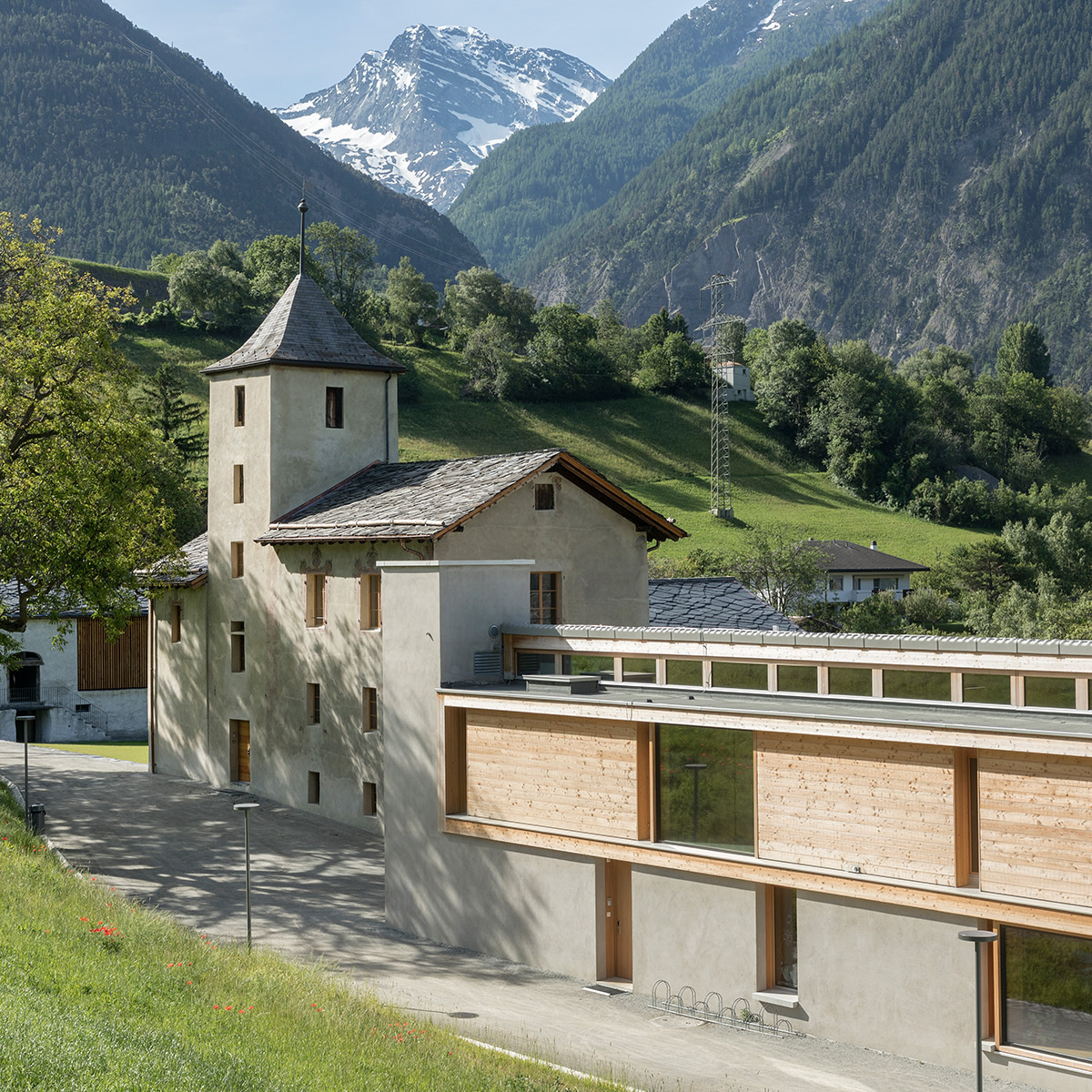
Designing with the genius loci
Abstract
The essay describes three design projects which aim to interact specifically with the Alpine context, in Switzerland, in contrast to the undifferentiated and non-specific nature of architecture in the age of globalisation. The Jugendwohnheim Mattini project in Brig enhances the surrounding rural landscape by repurposing a castle as a youth home for the housing and education of adolescents in need. The small baroque castle has undergone conservative renovation; the former barn on its side now houses teaching spaces, and a new building on the other side has been added to provide both common rooms and private bedrooms. The surrounding shared outdoor area is ideal for both leisure and educational activities: they provide an opportunity for socialisation and reintegration through work and care of the land, and through the enjoyment of its products, which translate into regeneration and self-care. The project for a new elderly home in Giornico interacts with the natural landscape of the Leventina Valley, which is narrowed by steep slopes and crossed by the river Ticino. The characteristic reference points used by the designers for the development of the final projects of the elderly home are the Romanesque church of St. Nicholas, marked by precise and rigorous stereometric volumes, and the La Congiunta museum, designed by architect Peter Märkli. The square layout of the elderly home frees up space on the sides and creates a dialogue with the surrounding environment. It extends in height, with a portico on the ground floor and a terrace on the top floor covering the entire perimeter of the building. Inside, the common rooms recall the density of villages, while the bedrooms offer domestic intimacy. Pathways and panoramic viewpoints overlook the surrounding landscape, with its natural and cultural values, representing the scenery of everyday life and the memory of the elderly. Thanks to the restoration of the Motto bridge over river Brenno, the infrastructure reconnects to the landscape, linking the village church to the oratory of the cemetery. The bridge re-establishes a continuity between anthropic artefacts, historical values, and the river landscape.







